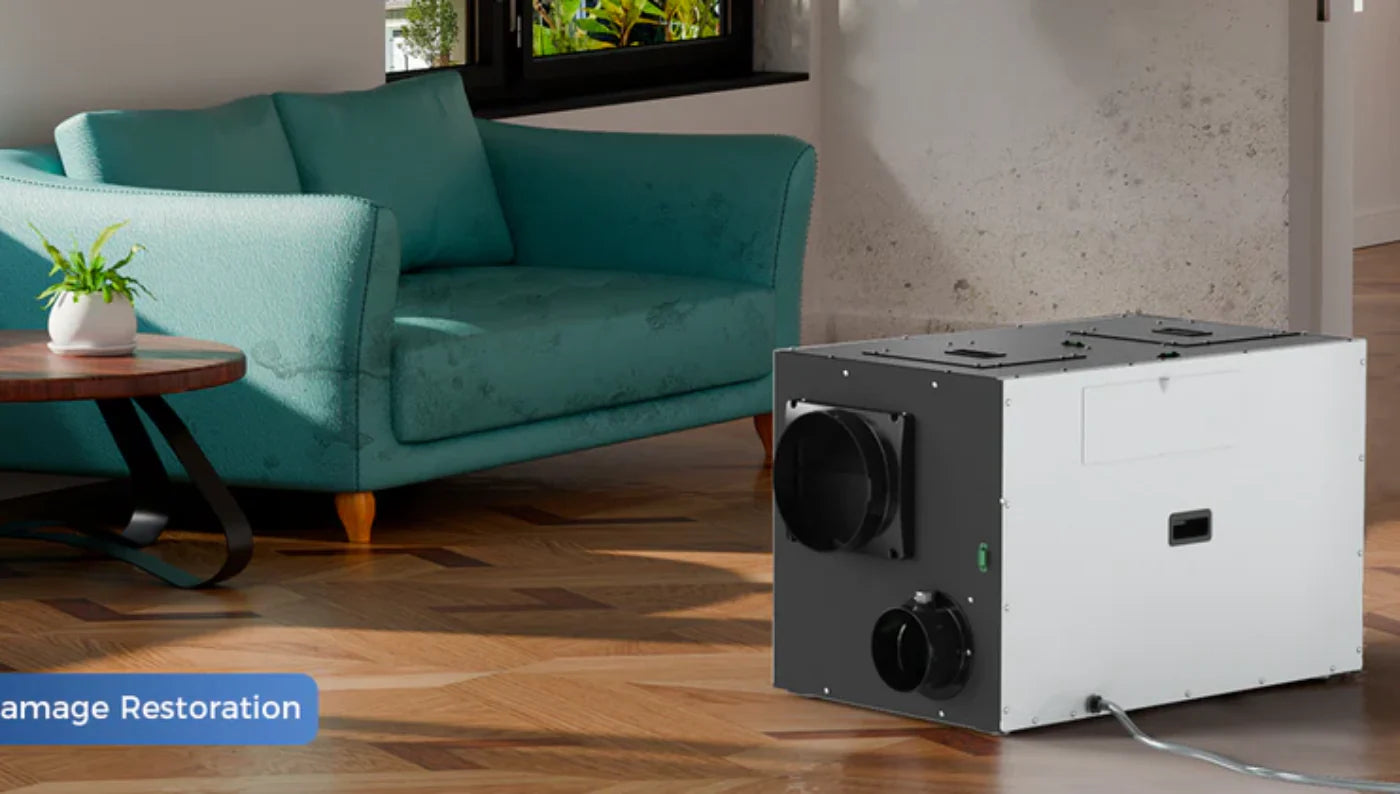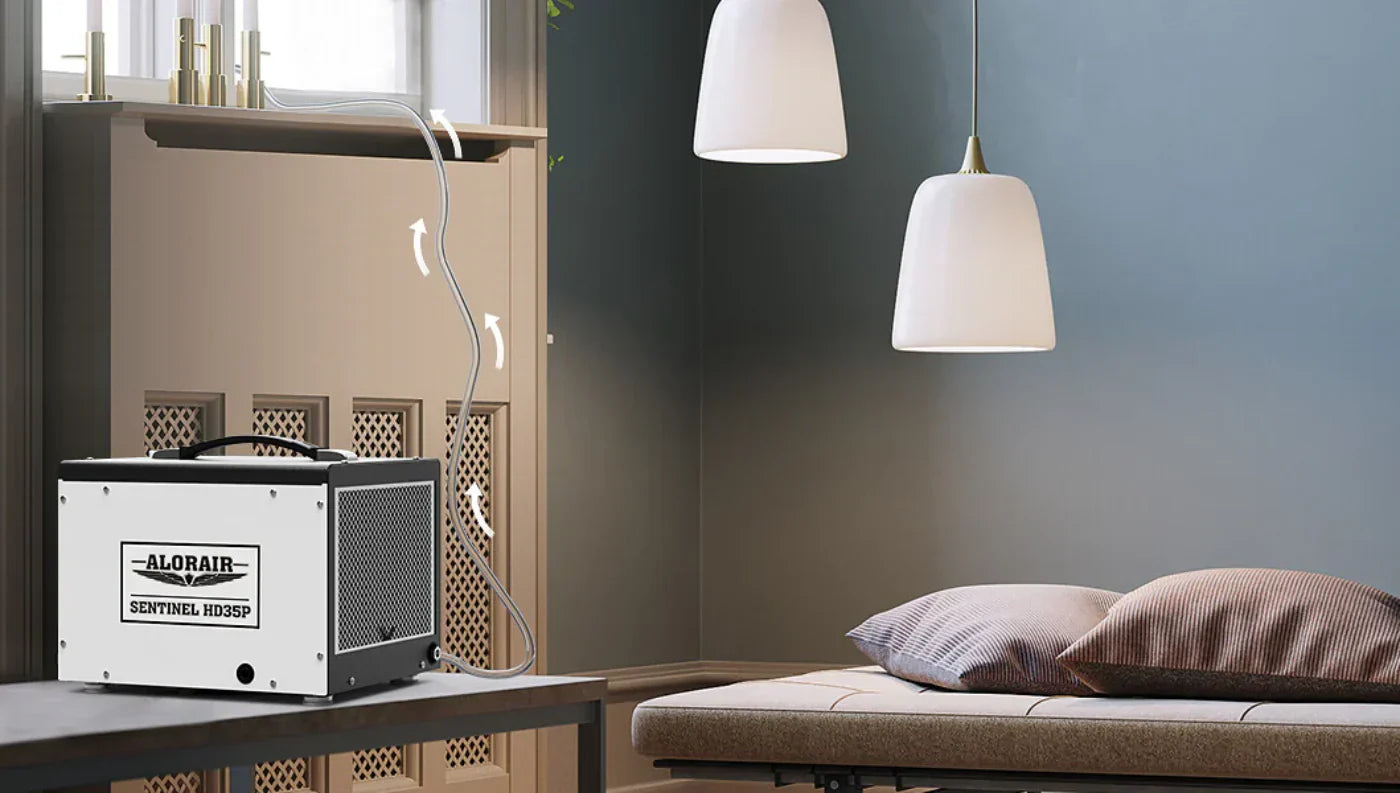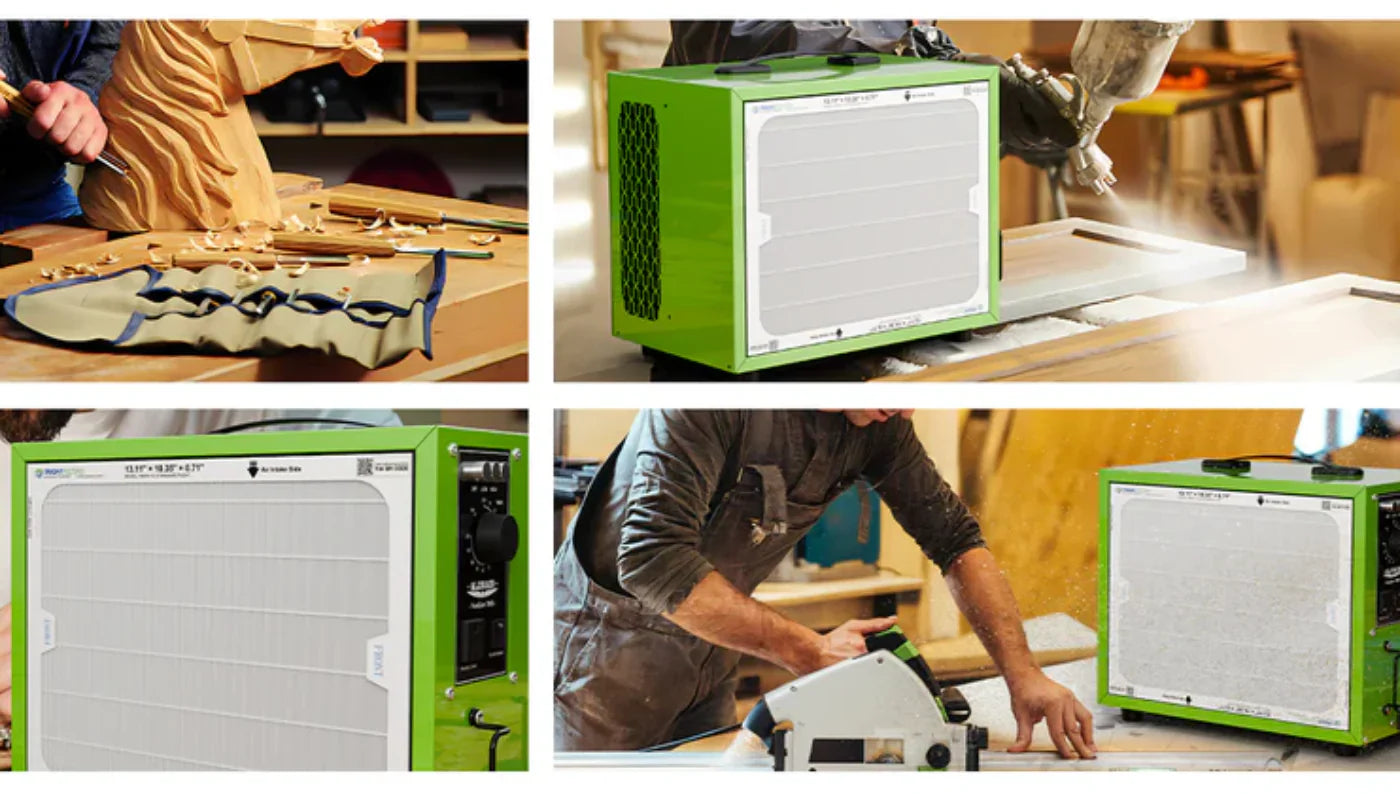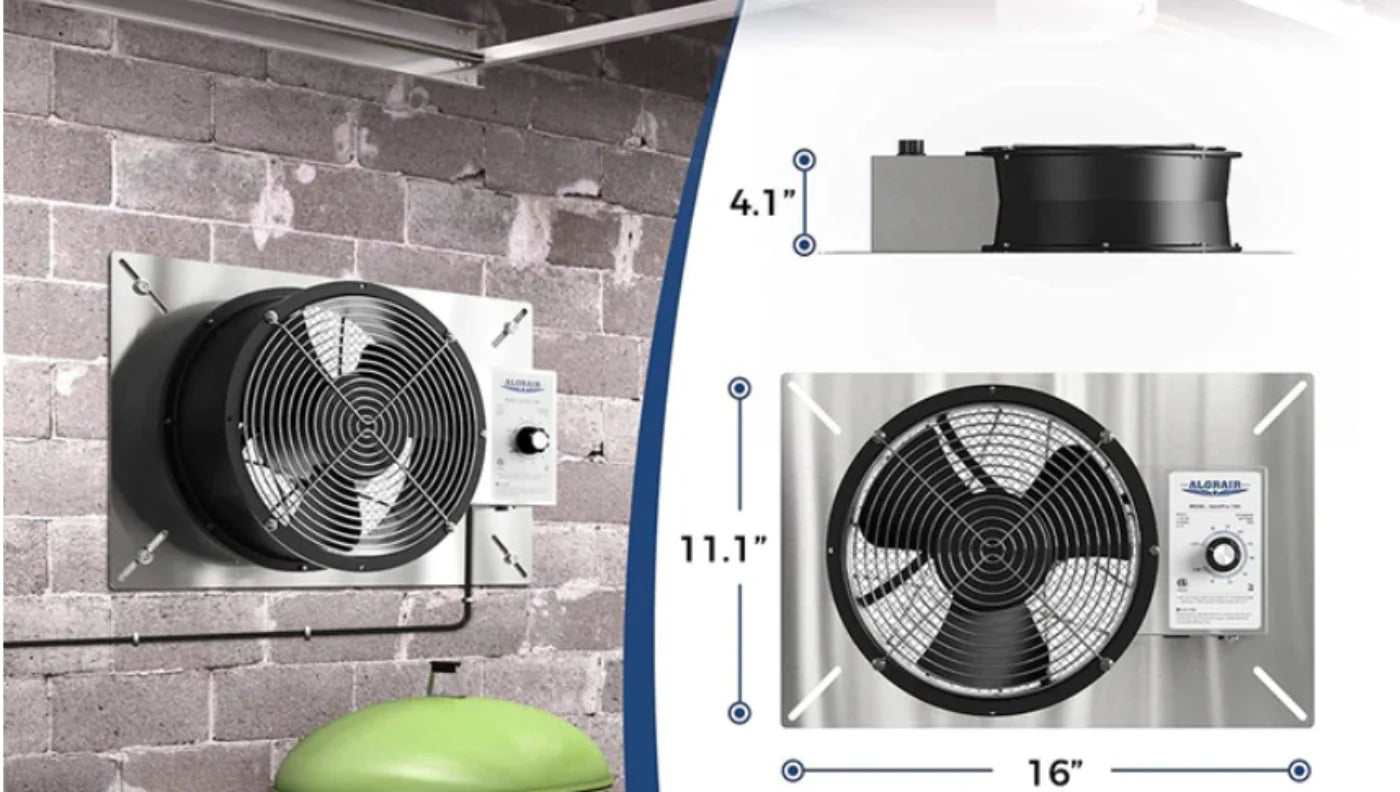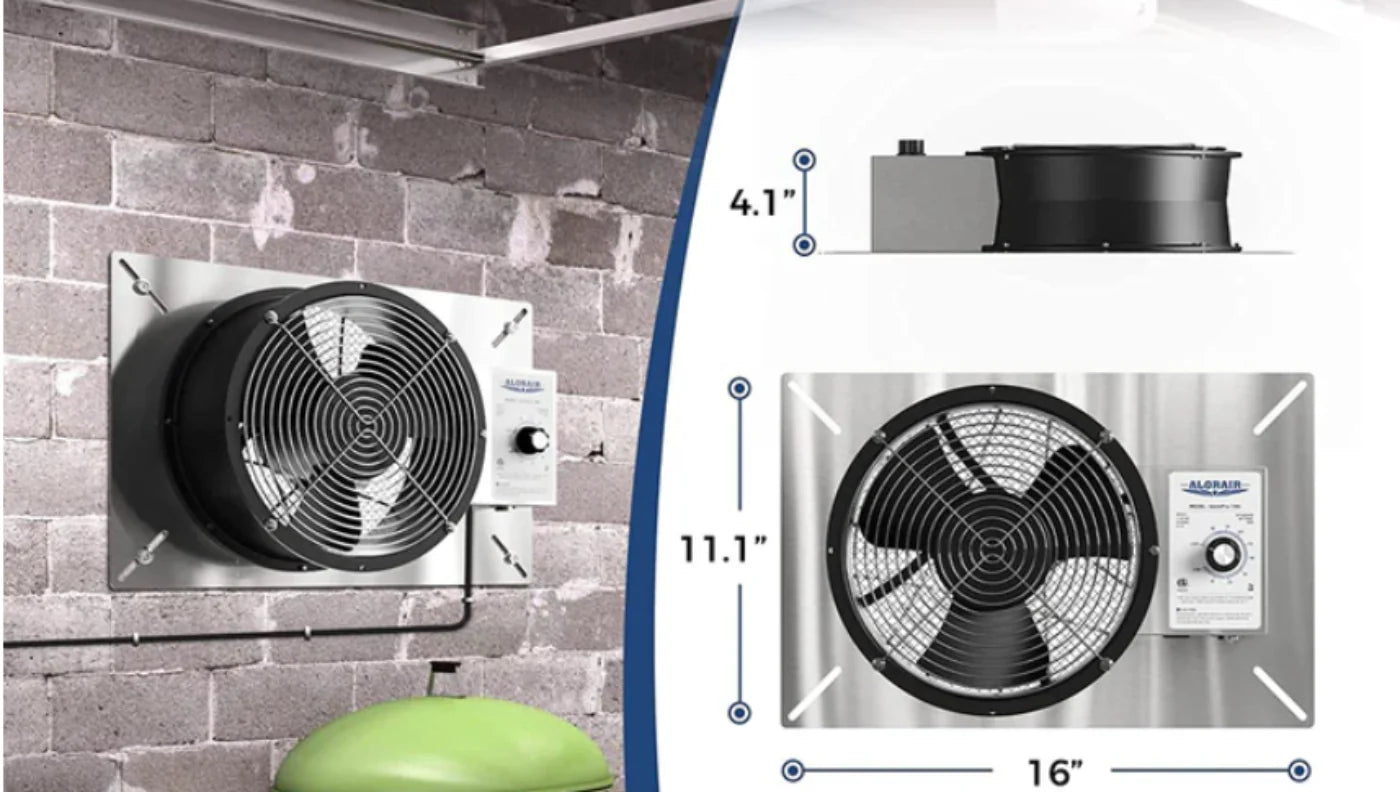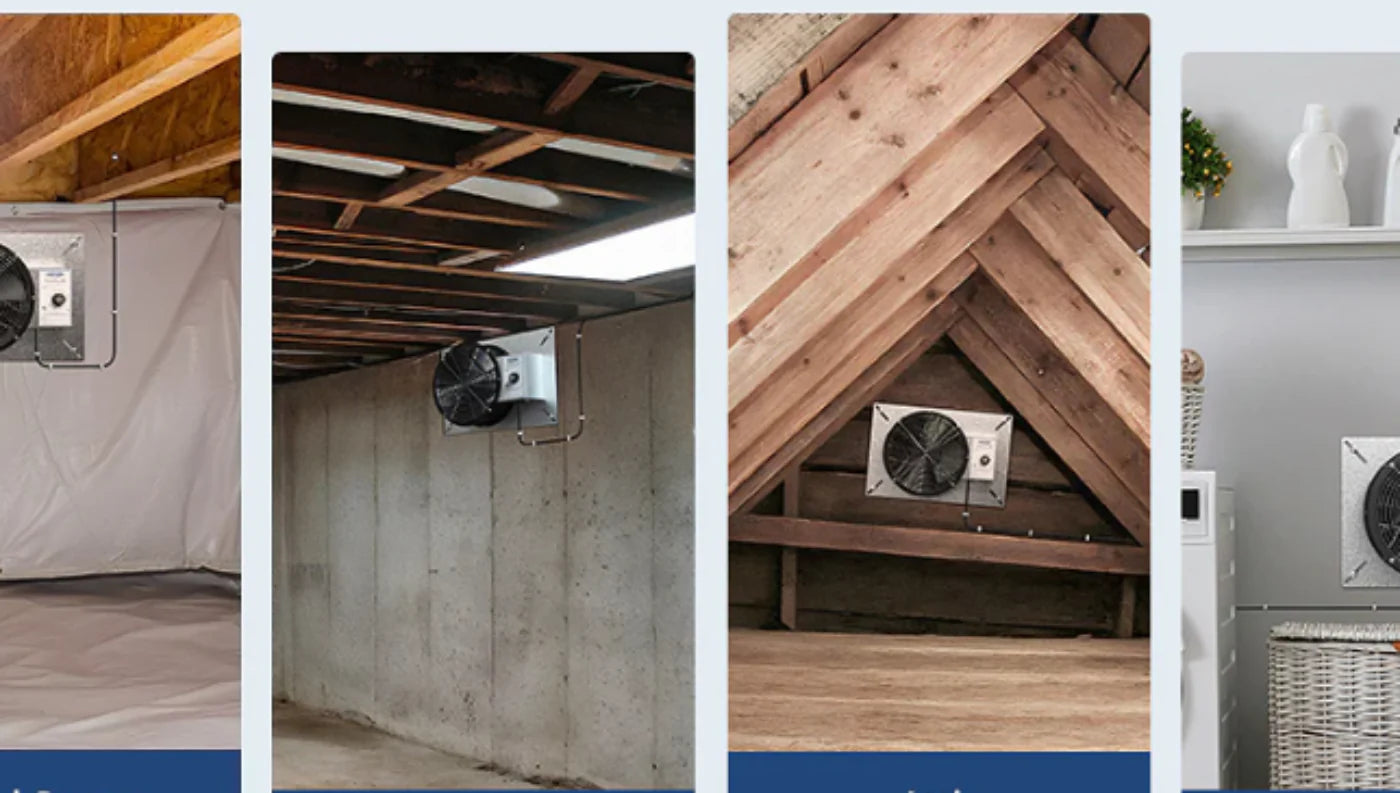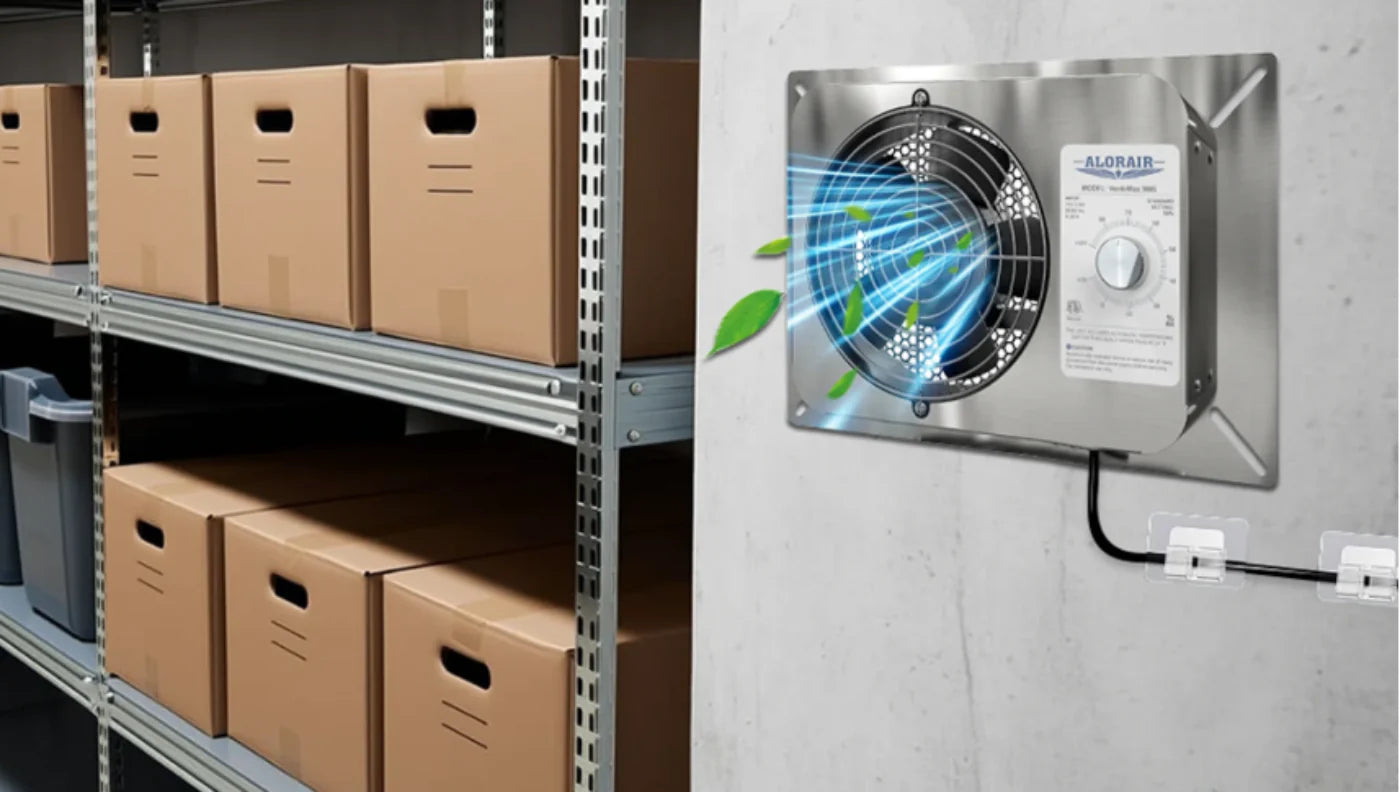Ever wondered - where does all the moisture go in a bathroom without an exhaust fan? Don't underestimate the moisture; if it's not drained out in time, it can make wallpaper peel off, moldy wood cabinets, and even breed black spot mold, ruining the entire décor. So here's the question: what to do if your bathroom doesn't have an exhaust fan or a window? How do you get the air moving? What are the alternatives?
In this article, we'll take the problem apart and talk step by step about how to fix bathroom ventilation without an exhaust fan, and along the way, we'll introduce some high-efficiency air filtration systems and practical tools like the AlorAir 260CFM Ventilating Fan to help you solve the air circulation and humidity problems.
What Happens If a Bathroom Fan Is Not Vented?

Let’s set the scene: You just took a hot, steamy shower. The mirror fogs up. The walls glisten. You walk out, shut the door, and the moist air? It stays trapped inside.
A bathroom exhaust fan that’s installed but not properly vented outdoors is basically useless. It may be spinning, but all it’s doing is circulating moist air around the room or into your attic—and that can cause more harm than good.
According to the International Residential Code (IRC 2018), all bathrooms in U.S. homes must be equipped with mechanical ventilation unless they have an operable window at least 3 square feet in size. But code compliance aside—what actually happens if your fan doesn't vent outside? Here's the breakdown.
Moisture Accumulation
One Shower 1.5 Liters of Water in the Air. A single 10-minute hot shower releases approximately 0.4 gallons (1.5 liters) of water vapor into the air. That’s like throwing a bottle of water into the air and hoping it disappears. It doesn’t. It clings to: Ceilings and drywall seams, Paint and wallpaper, Tile grout and silicone sealant, Wood cabinets and baseboards
Do the math: one shower per day over 145 gallons (550 liters) of moisture released into your bathroom every year. Without proper ventilation, that water doesn’t escape. It soaks into surfaces and starts a chain reaction of problems.
Mold Growth
It Only Takes 24–48 Hours. Mold doesn’t need much to thrive—just moisture, warmth, and organic material (like wood, paper, or dust). With indoor humidity above 60%, mold spores can become active within 24 to 48 hours.
Bathrooms are the perfect breeding ground, especially in: Grout lines between tiles, Behind the vanity, Inside drywall cavities, and Ceiling corners near light fixtures
And it’s not just ugly black spots. Mold can trigger allergies, asthma, and respiratory issues, especially in children or anyone with a weakened immune system. The EPA warns that mold exposure indoors should be taken seriously, and the number one way to prevent it is ventilation.
Structural Damage
Steam Time Destruction, When steam gets trapped repeatedly, it does more than fog your mirror—it starts eating away at your home’s structure. Here's what you may see:
-
Wood warping: Door frames swell, cabinets expand, drawers stick
-
Paint bubbling and peeling: Especially on ceilings and corners
-
Drywall damage: Moisture seeps in and softens the surface
-
Mildew odor: A musty, damp smell that never fully disappears
If your exhaust fan is dumping steam into the attic or a wall cavity (which happens far too often), you could be looking at rot, insulation damage, or even roof issues down the line.
Lingering Odors and Poor Air Quality
Let's not forget: bathrooms aren't just humid—they’re smelly too. Without proper ventilation, odors have no exit route. Instead, they: Soak into porous materials like drywall and curtains. Linger in the air, even hours after use. Contribute to the overall poor indoor air quality
If you’ve ever walked into a bathroom hours after it was used and it still smells “off,” it’s likely because the fan doesn’t vent properly—or at all.
What To Do If A Bathroom Doesn't Have A Fan Or Window?

No fan, no window? Let’s be honest—this situation is way more common than you'd think. Old homes, finished basements, attic conversions, or even budget-conscious rental units often come with what we’ll call a “sealed bathroom”: no fan, no window, no natural ventilation.
But here’s the catch: you can’t just ignore it.
Without proper airflow, bathrooms become humid traps, perfect for mold, mildew, and rot. That funky smell? It’s not going away on its own. You need a solution that doesn’t rely on breaking open a wall or window.
Proper bathroom ventilation must meet these three criteria. Vent directly to the outside (not the attic, ceiling cavity, or garage). Have a sufficient airflow rating, typically at least 50 CFM for small bathrooms (per ASHRAE guidelines). Be used consistently during and after showering—for at least 20–30 minutes
Below are three practical and effective ways to ventilate a bathroom with no fan and no window—solutions that actually work and won’t wreck your budget.
Install a Home Air Filtration System With Dehumidification
This is hands-down the most efficient long-term fix. Modern home air filtration systems don’t just clean the air—they actively remove excess moisture from the room.
Take the AlorAir Sentinel HD55, for example: Designed specifically for bathrooms, basements, and crawl spaces, Can remove up to 55 pints (about 26 liters) of moisture per day, Optional HEPA filter add-on traps mold spores, allergens, and fine dust (PM2.5) Compact and quiet enough to run in the background without bothering anyone
Use a High-Efficiency Air Circulation System
If you can’t ventilate outdoors or don’t want to break through a wall, internal air movement is key. Here’s how to make it work.
Add a door vent or door grille
Install a low-profile door vent at the bottom of the bathroom door. This allows humid air to escape into adjacent rooms where it can disperse and dry out. Make sure the connecting room has better airflow.
Install a wall-mounted ventilation fan like the AlorAir 260 CFM unit
This fan moves a powerful 260 cubic feet of air per minute, ideal for small-to-mid-sized bathrooms. What makes it great?
Can be ducted into your home’s existing HVAC or ventilation system. Doesn’t require a window or direct outdoor access. Helps extract moist, stagnant air and redirect it into drier zones
This option is ideal for anyone doing a bathroom remodel or working with a contractor who can help connect it to your home’s airflow infrastructure.
Daily Dehumidification + Smart Venting Habits
On a tight budget or renting? No problem—there are still solid DIY tactics you can use. Here’s your three-step routine.
Open the bathroom door after every shower. Leave it wide open for at least 20–30 minutes. Let the steam out into the hallway or adjacent room. Use a portable dehumidifier. A compact, energy-efficient unit is enough. Choose one that: Has auto shut-off, Is sized for 50–100 square feet, Can be emptied easily, and run it daily after showers for best results.
Add natural moisture absorbers. Charcoal bags (place in corners, replace monthly). Indoor plants like snake plants (Sansevieria) or peace lilies naturally help with air purification and minor humidity regulation. These small changes work surprisingly well together, especially in bathrooms under 70 sq. ft.
How Can I Vent My Bathroom Without An Exhaust Fan?
Not every bathroom comes with an exhaust fan, especially in older homes or small apartments. But lack of a fan doesn’t mean you have to suffer from lingering moisture and odors. You can still ventilate your bathroom effectively by combining some smart, practical methods.
First, the simplest step is to keep the bathroom door open after showers or baths. This allows humid air to escape into adjoining rooms where it can disperse more easily. For an extra push, place a small fan facing outward in the doorway to help push moist air out and pull fresh air in. Opening a nearby window or door somewhere else in the house can create helpful cross-ventilation, too.
If you want a more permanent fix, consider installing a door vent or transfer grille at the bottom of the bathroom door. This lets air flow out of the bathroom even when the door is closed, reducing trapped moisture and stale air buildup. These vents are inexpensive, easy to install, and make a big difference.
Another option is to use a portable or wall-mounted ventilation fan that doesn’t need external venting. For example, the AlorAir 260 CFM Ventilation Fan can be mounted on a wall and connected to your existing HVAC ductwork to push moist air into a central vent system. This fan moves a powerful 260 cubic feet of air per minute, which is more than enough for most mid-sized bathrooms, and doesn’t require cutting holes to the outside.
Supplement your ventilation efforts with a quality whole house dehumidifier. A portable dehumidifier helps pull moisture from the air, lowering humidity even if airflow is limited. Units like the AlorAir Sentinel HD55 remove up to 55 pints of water daily and can even filter airborne mold spores when equipped with HEPA filters. Running one in your bathroom keeps the air dry and helps prevent mold growth.
Conclusion
Ventilating a bathroom without an exhaust fan may seem tricky, but it’s far from impossible. The key lies in combining simple airflow solutions with moisture control. Opening doors and using fans strategically promotes fresh air circulation, while installing door vents ensures continuous passive airflow even when privacy is needed.
For a more advanced setup, wall-mounted ventilation fans like the AlorAir 260CFM model can effectively move humid air through existing HVAC ducts without exterior venting. No matter your bathroom’s layout or budget, you have multiple practical, effective options to keep the air fresh and dry—no exhaust fan required. So don’t wait for renovations; start improving your bathroom’s ventilation today and enjoy a healthier, more comfortable space.




